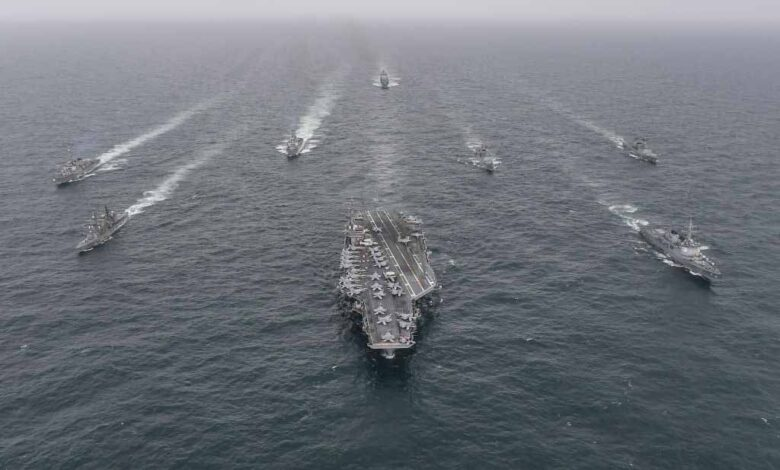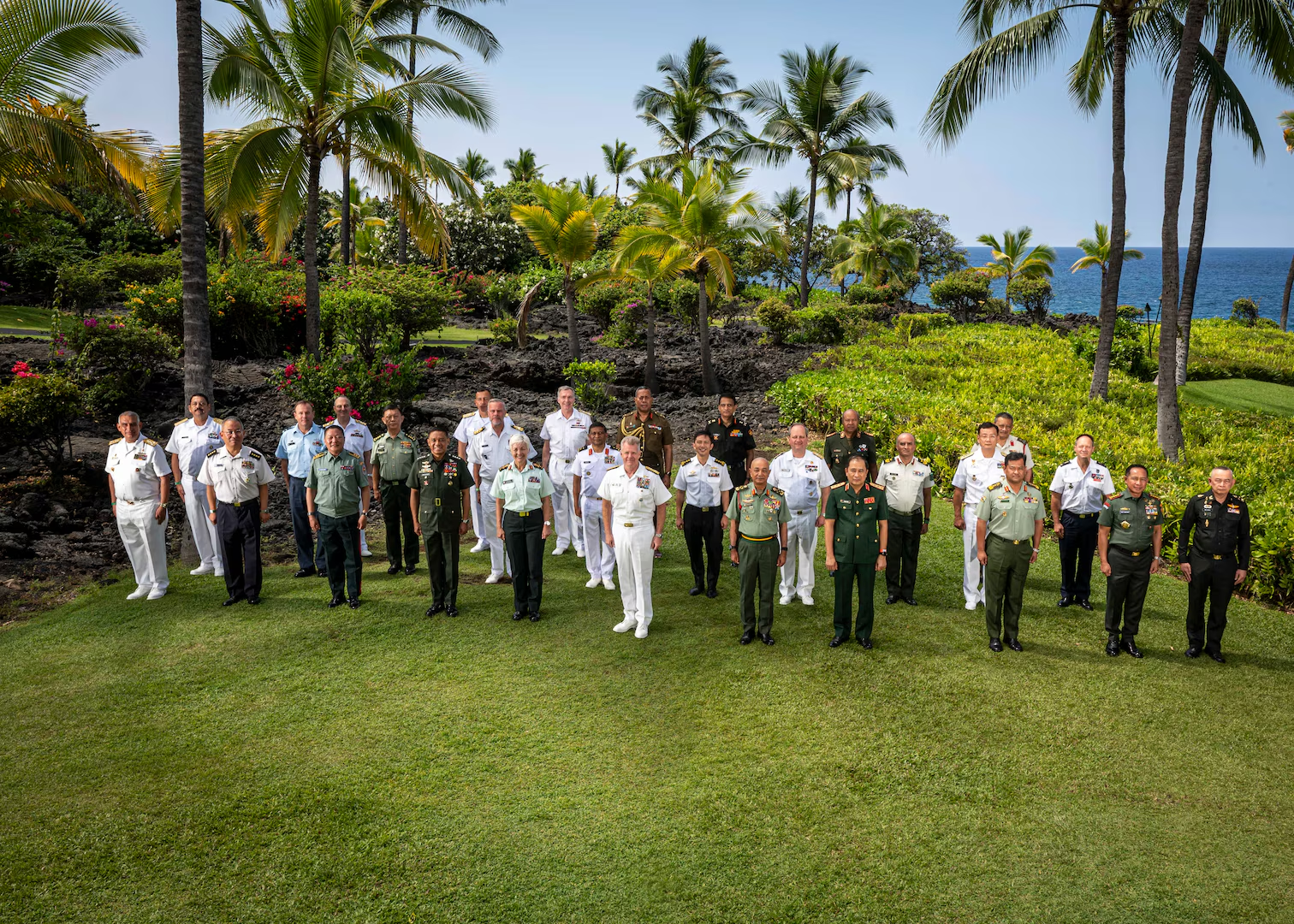Dr. Hyeongpil Ham, a retired Republic of Korea colonel, has worked for more than 30 years at South Korea’s Ministry of National Defense and Ministry of Foreign Affairs and the Korea Institute for Defense Analyses. He led South Korea’s governmental task force responsible for addressing North Korea’s nuclear threats and developing South Korea’s deterrence and defense strategy. He holds a doctorate degree in nuclear and alternative energy systems and policies from the Massachusetts Institute of Technology. He attended the United States Strategic Command Deterrence Symposium in Omaha, Nebraska, in August 2024 and responded to Sentry’s questions about key alliances and countering threats from North Korea.
SENTRY: How do you define strategic deterrence and what does it look like through the lens of the Republic of Korea and its strategic deterrence policy?
HAM: From my perspective, strategic deterrence entails a comprehensive array of efforts to prevent and dissuade nuclear or strategic threats through the coordinated use of national capabilities, spanning diplomatic, informational, military and economic instruments. I do not believe that nuclear weapons are the sole means to achieve strategic deterrence. Advanced conventional forces that deliver strategic effects are equally pivotal in achieving effective strategic deterrence. Hence, from Korea’s viewpoint, it involves a holistic deterrence strategy against North Korea’s nuclear and strategic threats. Achieving this necessitates the integration of U.S. extended deterrence with South Korea’s advanced conventional military capabilities.
SENTRY: Who are the most important strategic Allies to South Korea and who do you see as emerging Allies starting to engage more on matters of strategic deterrence?
HAM: Most South Koreans consider the United States, the only Ally, as the most important strategic Ally. Additionally, considering Korea’s geopolitical location, Japan, the closest friendly nation, is seen as a Partner with whom strategic deterrence cooperation should be enhanced. This reality is well reflected in the ongoing efforts to strengthen trilateral military cooperation between South Korea, the U.S. and Japan.
SENTRY: What are the benefits and costs of nuclear deterrence such as deterrence failure, nuclear proliferation, nuclear accidents and nuclear disarmament?
HAM: The advantages of nuclear deterrence include preventing nuclear proliferation, fostering an environment that supports nuclear disarmament, and, from the U.S. perspective, sustaining global leadership by effectively deterring nuclear threats, which also fortifies alliance networks. Conversely, the costs of nuclear deterrence can be catastrophic if it fails, leading to unimaginable loss of life and severe damage to infrastructure.
SENTRY: What trends are you seeing in the development of nuclear weapons and delivery systems such as modernization, diversification, miniaturization and hypersonic weapons?
HAM: I believe that nuclear powers like the U.S., China and Russia have re-entered an arms race that was momentarily paused after the Cold War. These nations are actively pursuing the modernization and diversification of nuclear warheads and delivery systems, with a focus on improving their capacity for rapid strikes and evading enemy defenses. They are also advancing hypersonic weapons and undersea or space-based weapons systems to enhance penetration capabilities. These initiatives are designed to maintain survivable forces even against enemy surprise attacks and to establish superiority in nuclear capabilities over their adversaries.
SENTRY: What are the main actors and factors that shape the nuclear balance and dynamics in Northeast Asia, such as the United States, China, Russia, North Korea, South Korea and Japan?
HAM: At the strategic level, it is crucial to maintain a balance of strategic capabilities among nuclear powers such as the U.S., China and Russia. On the Korean Peninsula, the most significant efforts focus on balancing nuclear capabilities between North Korea and the U.S.-South Korea alliance. The potential for regional conflicts in Northeast Asia to be closely intertwined with the Korean Peninsula cannot be dismissed, as these conflicts could offer adversaries opportunities. Presently, North Korea is central to these dynamics, striving to establish a 3:3 confrontation structure under the so-called New Cold War framework, with South Korea, the U.S. and Japan on one side, and North Korea, China and Russia on the other. North Korea perceives an alliance against the U.S. as the most advantageous strategic stance.
SENTRY: How do you define the threat from North Korea, and do you see the concerns over those threats being addressed by those in the international community?
HAM: The threat from North Korea hinges on its ability to menace the U.S. and execute limited nuclear attacks on the Korean Peninsula. South Korea is particularly concerned that if North Korea attains a survivable second-strike capability, it could establish a favorable strategic position on the peninsula by threatening full-scale nuclear escalation. The most pressing concern is the potential for a limited nuclear conflict driven by the threat of escalation. While the international community is aware of these threats, I believe their efforts to deter them are insufficient.

IMAGE CREDIT: GETTY IMAGES
SENTRY: What are the main challenges and opportunities for nuclear confidence-building and cooperation in Northeast Asia?
HAM: The biggest challenge, in my opinion, lies in the lack of transparency in sharing sufficient information. This leads to a tendency to exaggerate each other’s strategic intentions. Therefore, more efforts should be made to prevent misunderstandings and miscalculations by engaging in strategic dialogue between hostile nations.
SENTRY: What are the main domestic and internal factors and dynamics that affect the decision-making and policymaking of the actors and stakeholders involved in strategic deterrence and nuclear weapons in Northeast Asia, such as the political system, public opinion, or interest groups?
HAM: The most significant internal factor influencing decision-making and policymaking in the realm of strategic deterrence and nuclear weapons is the political system. In South Korea, although there is strong public support for the development of indigenous nuclear weapons, the government prioritizes strengthening strategic deterrence in collaboration with its Allies.
SENTRY: What are the main global and transnational factors and trends that affect the opportunities and challenges of the actors and stakeholders involved in strategic deterrence and nuclear weapons in Northeast Asia, such as the attempts to expand influence by China and Russia and the emergence of new technologies?
HAM: Globally, the most impactful factor shaping Northeast Asia is the expansionist ambitions of China and Russia. Although the advent of new technologies also considerably affects strategic deterrence, I believe geopolitical factors are even more critical.
SENTRY: How do we make advances in integration in a world that is seemingly so fractured at the moment?
HAM: The United States must exercise leadership by articulating and emphasizing shared values and goals. Through the realization of democratic values, a strong alliance can be forged. U.S. leadership and sacrifices will be pivotal in this endeavor.
SENTRY: What strategic deterrence or defense capabilities is the ROK extremely proud of, and what areas is the defense force working on to improve?
HAM: South Korea is enhancing its conventional force-based strategic deterrence capabilities, particularly through the conventional three-axis system (Kill Chain, Korea Air and Missile Defense, Korea Massive Punishment and Retaliation). Additionally, in the upcoming October, South Korea is set to establish a conventional strategic command, which will oversee strategic deterrence. The Korean strategic command is anticipated to bolster combined deterrence with the U.S. by exercising operational control over various strategic forces, including advanced conventional forces, high-powered ballistic and cruise missiles, strategic drones and special mission brigades.
SENTRY: What role does soft power play in the development of strategic defense planning, and what does it look like when applied?
HAM: Efforts to integrate allied capabilities in the realms of diplomacy and information are equally as vital as hard power. Unlike authoritarian regimes, democracies such as the United States and its Allies must prioritize seamless information sharing to build a robust network and achieve mutually beneficial outcomes. This area demands a forward-looking approach in U.S. strategic thinking and strategic deterrence capabilities. I believe the current era necessitates cooperation grounded in transparency rather than strategic ambiguity with allied nations.
SENTRY: What haven’t we asked you that you would like to talk about or share with your peers?
HAM: Currently, South Korea is under the daily threat of nuclear aggression from the North Korean regime, one of the most challenging and dangerous regimes globally. A crisis or conflict on the Korean Peninsula has the potential to escalate into a global nuclear confrontation through the solidarity of authoritarian states. Thus, it is imperative for the U.S. to exert every effort in developing an ideal model for U.S.-South Korea conventional-nuclear integration (CNI) on the Korean Peninsula, which is essential for both U.S. national interests and global peace. The evolution of U.S.-South Korea CNI remains an underexplored area that demands a deep understanding of each other’s perspectives and the bridging of differences. The U.S.-South Korea Alliance is resilient enough to overcome these challenges.





